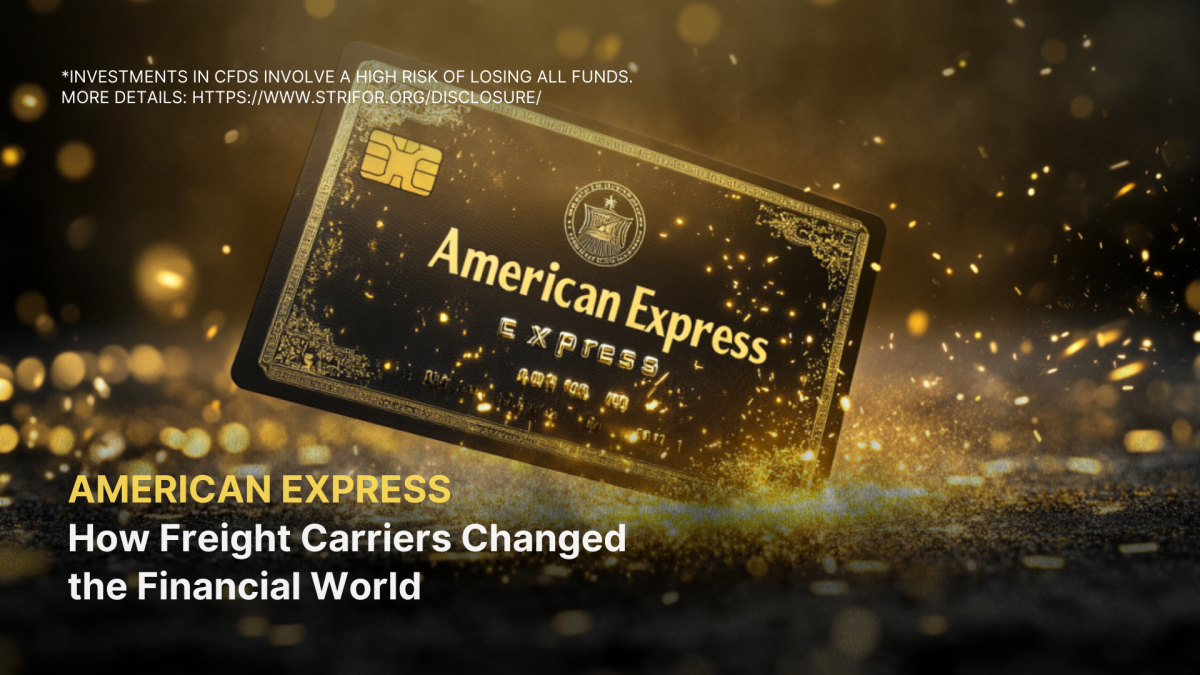
AMERICAN EXPRESS — How Freight Carriers Changed the Financial World
In the mid-19th century, America was rapidly developing: railroads were being built, cities were growing, and trade volumes were increasing. However, there was one serious problem — the reliable transfer of money and valuables. The banking system had not yet adapted to the new challenges, and transporting cash was fraught with risks. It was at this point that a company emerged, initially providing freight transportation but later redefining the concept of financial services. In today’s Strifor review, we discuss American Express, which celebrates its 175th anniversary.
From Transporting Valuables to Financial Operations
On March 18, 1850, Henry Wells, William Fargo, and John Butterfield joined forces to establish American Express in New York. Initially, the company transported valuable goods and money by rail, ensuring security for its clients. However, customers soon began to turn to American Express not only for transportation but also for financial services.
In 1891, the company introduced travelers’ checks — a revolutionary product that allowed travelers to safely store and exchange money anywhere in the world. This was the first step in transforming American Express into an international financial player.
The Development of Cards and Entry into the Premium Market
In 1958, American Express issued its first charge card. Unlike competitors targeting the mass market, the company immediately chose the premium segment, focusing on affluent clients and offering them additional privileges.
By the 1980s, the brand had become synonymous with prestige, and the slogan “Membership has its privileges” reinforced the image of American Express cards as a symbol of wealth.
Key Deals and Strategic Decisions
- Acquisition of Shearson Loeb Rhoades (1981). In the early 1980s, American Express sought to expand its business through investment services and acquired one of the largest U.S. brokerage houses for $1 billion. However, the experiment proved unsuccessful, and in 1993, the asset was sold.
- Exit from the banking sector (1990s). After failed diversification attempts, the company changed its strategy, focusing on its core business — card issuance and servicing, helping to maintain stability during crises.
- Collaboration with Apple (2014). Including American Express cards in the Apple Pay system strengthened the company’s position in the field of digital payments and helped adapt to new technologies.
Challenges and Crises
Despite its success, the company faced difficulties. In 2008, the global financial crisis hit American Express’s primary customers — small business owners and wealthy clients. This forced the company to change its status to a bank holding company to receive government support.
Today, the main challenge remains competition from fintech companies and cryptocurrency solutions. Nevertheless, American Express maintains a strong position thanks to its brand and unique business model.
Impact on Financial Markets
American Express shares (AXP) are part of the Dow Jones Industrial Average and are traditionally considered a reliable asset, especially during periods of rising consumer spending. However, they are sensitive to economic downturns and changes in trade policies.
Free trade and globalization in the 2000s allowed the company to expand its international presence. However, modern trends like trade wars and increased protectionism could slow American Express’s expansion in some regions.
Conclusion
American Express has evolved from a logistics company to a global financial giant. Its cards have become a status symbol, and the brand is synonymous with reliability. However, new challenges lie ahead: competition from digital payment systems, regulatory pressures, and potential economic shocks.
Will American Express be able to maintain its dominance in the financial world? Time will tell. And with Strifor, you can trade CFDs on American Express shares and other leading global companies under competitive conditions. Join us — we always pay!
Attention! An investment in CFDs carries a high risk of losing all invested funds. 87% of retail investor accounts lose money when trading CFDs with this provider. Past investment success does not guarantee future results.

 Personal area
Personal area





